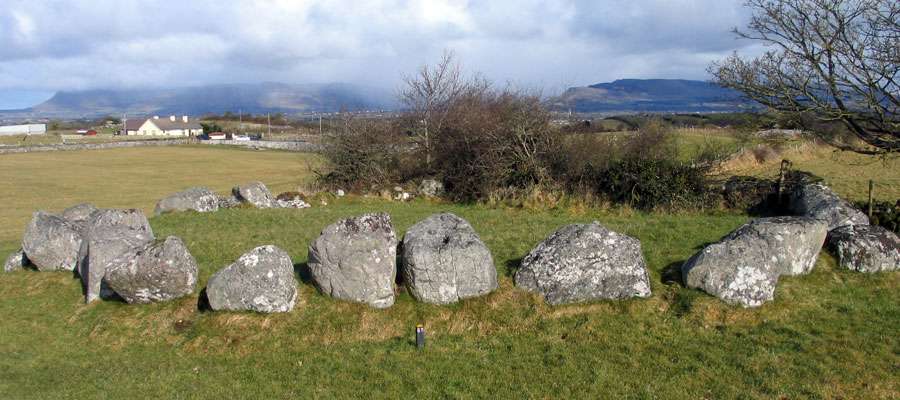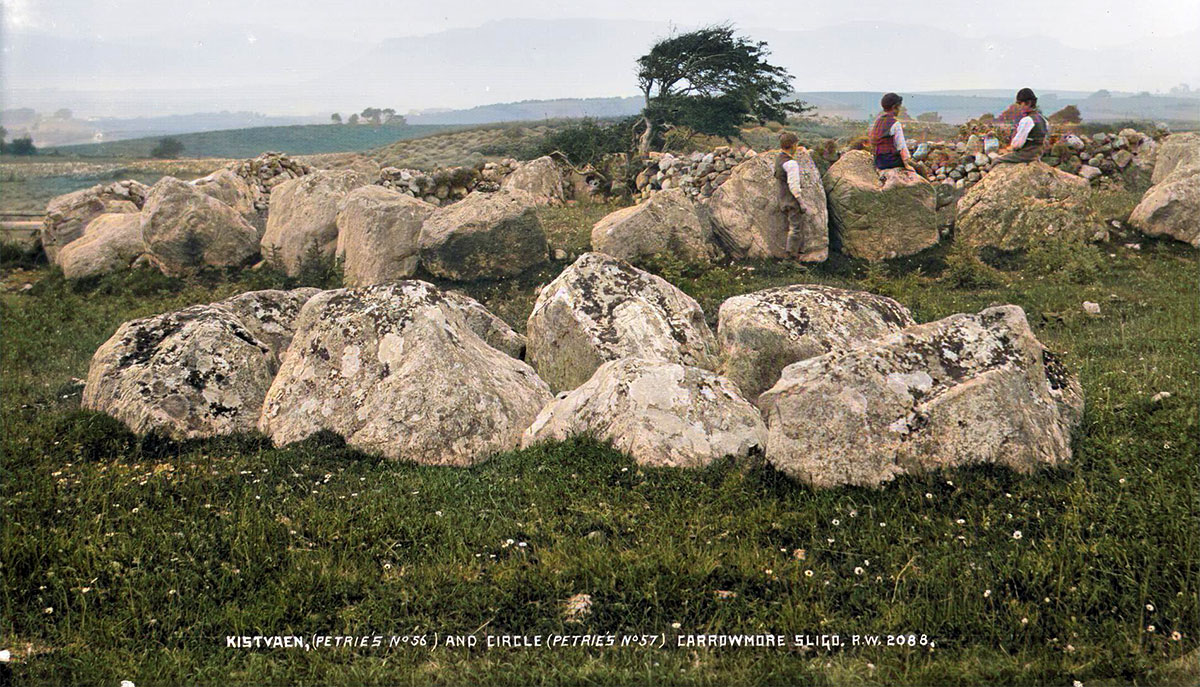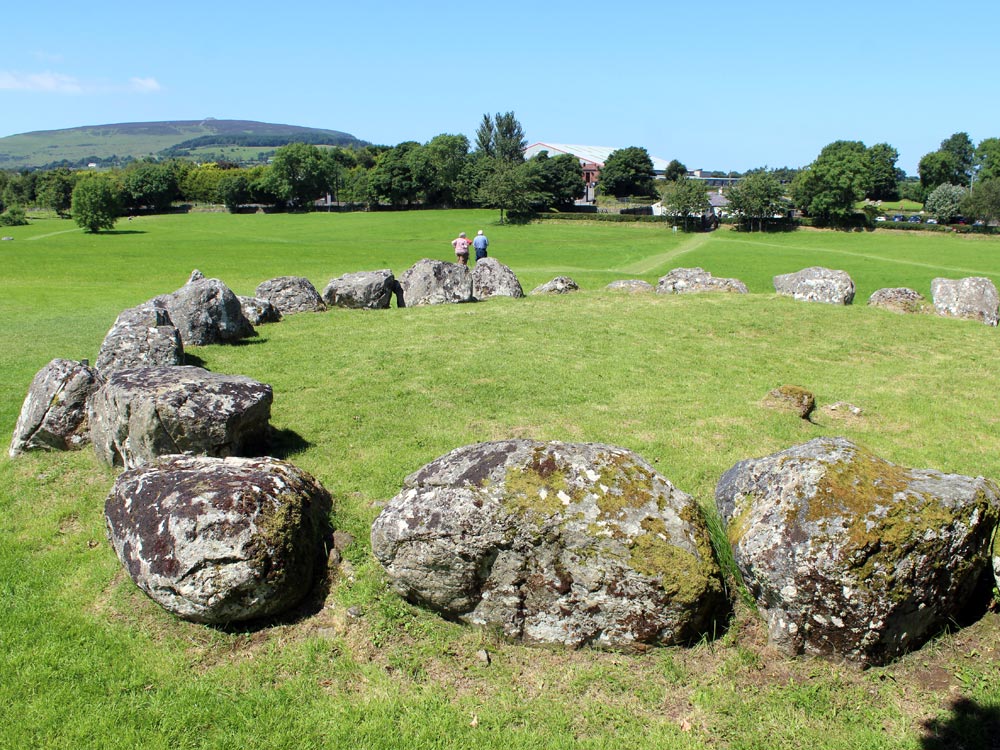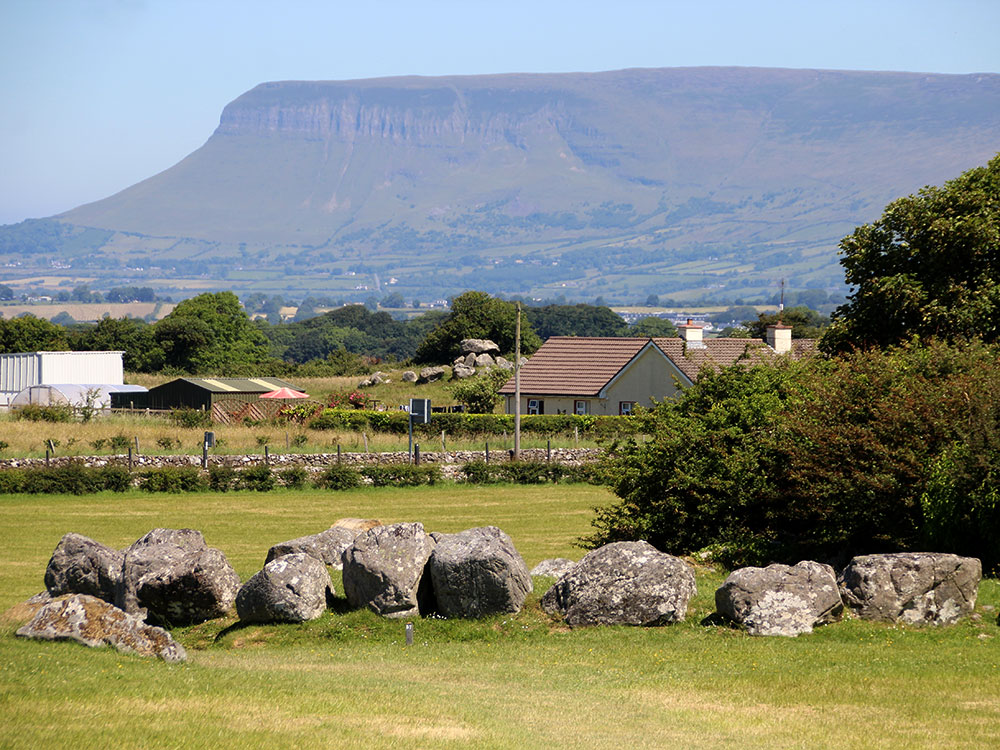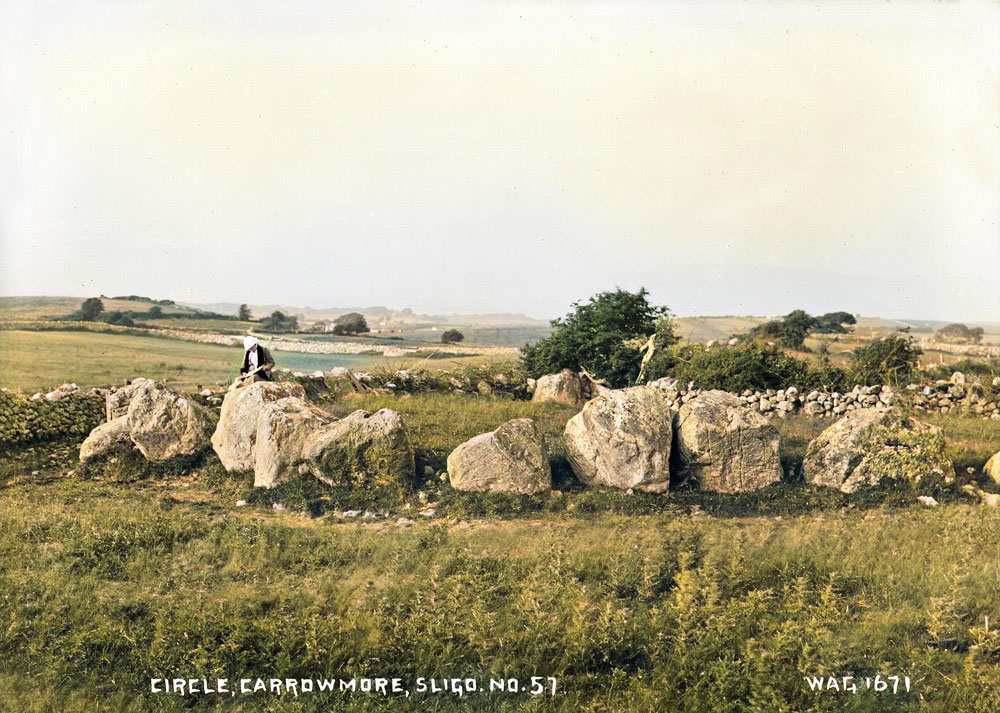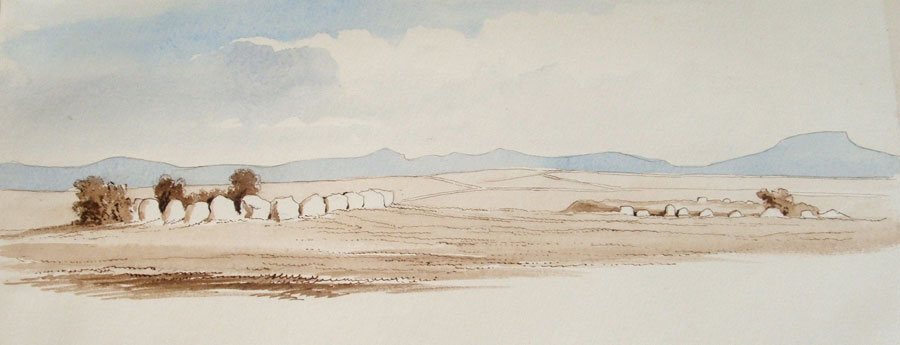Carrowmore Circle 57
Carrowmore 57 is one of the largest and best-preserved of the circles close to the center of the Carrowmore complex. This impressive ring is located on the edge of a gentle hill close to the central monument. Right beside Circle 57 is the almost complete example of tertre monument, Circle 56, and both monuments have good views to the Cailleach's House, the north towards the imposing wall of Benbulben, and towards Knocknarea in the west.
The interior of the circle is currently divided by a fieldwall which was built during the late 1830's, when Queen Victoria came to the British throne and an enclosures act was passed requiring landowners to fence property. A slice of the circle on the east side, comprising eleven large upright boulders, remain in private ownership outside the O.P.W. compound.
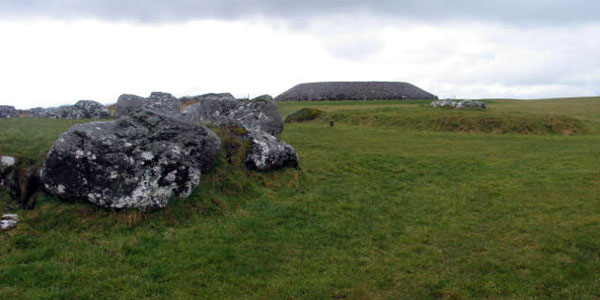
The ring of stones at Circle 57 measures 18 meters in diameter, with extremely large boulders being used to complete the ring. The use of such large stones may indicate that this is an earlier monument. On the west side of the ring the stones are recumbent, or lying flat on their long sides, while to the east to stones stand upright, in places more than two meters tall. The interior os the circle is a raised platform, made of small stones, up to one meter above the surrounding ground level.
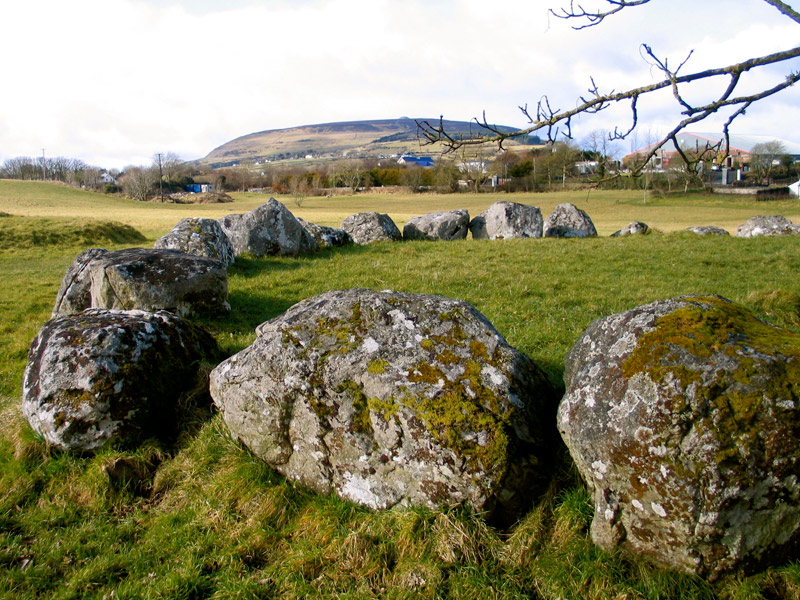
Circle 57 is one of several monuments which were reused at a later period by the invading people during the bronze age, who replaced the neolithic farmers from about 2,500 BC onwards. They removed a boulder within the southeast side of the circle and rolled it aside to make an entry into the ring; it is likely that the dolmen and chamber were dismantled and removed from the circle at this time. The large boulder in the fieldwall just south of the circle may be the capstone of the dolmen from Circle 57. A pit or hollow at the center may be the remains of the chamber, while two pieces of limestone may be the last piece of a passage.
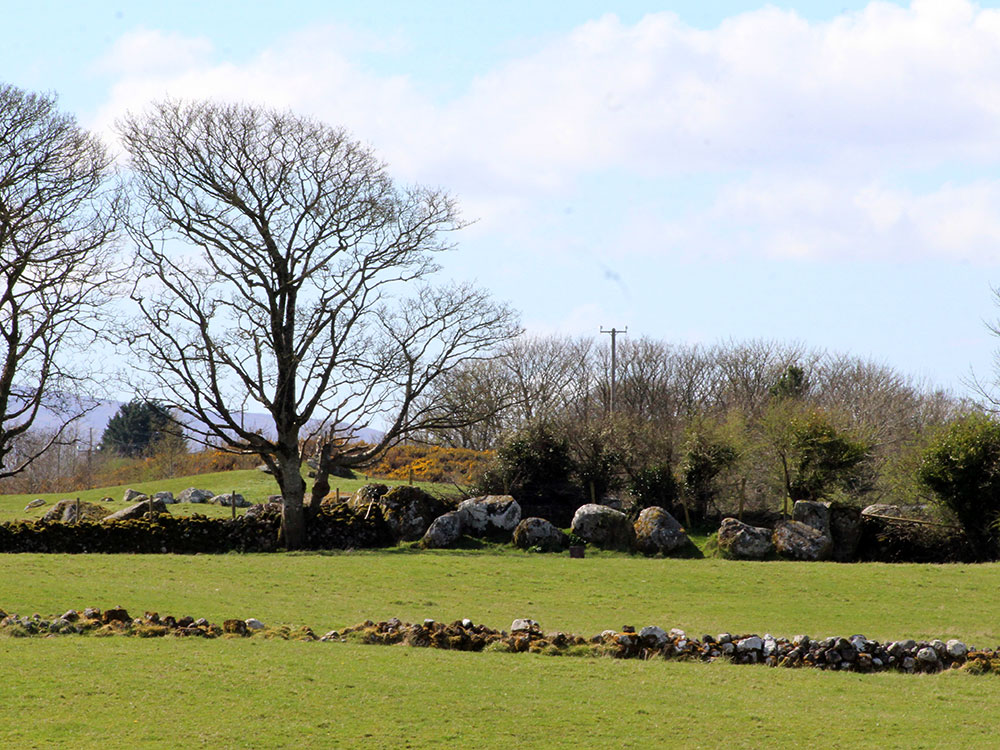
This is one of the larger circles at Carrowmore with a diameter of 18 meters. As usual the boulders enclose a large earthen platform or tertre. The 32 stones used in this circle are of a very large size in contrast to the stones in Circle 56 which are much smaller; and those on the west side are laid end to end, while many of those on the east site are standing upright.

